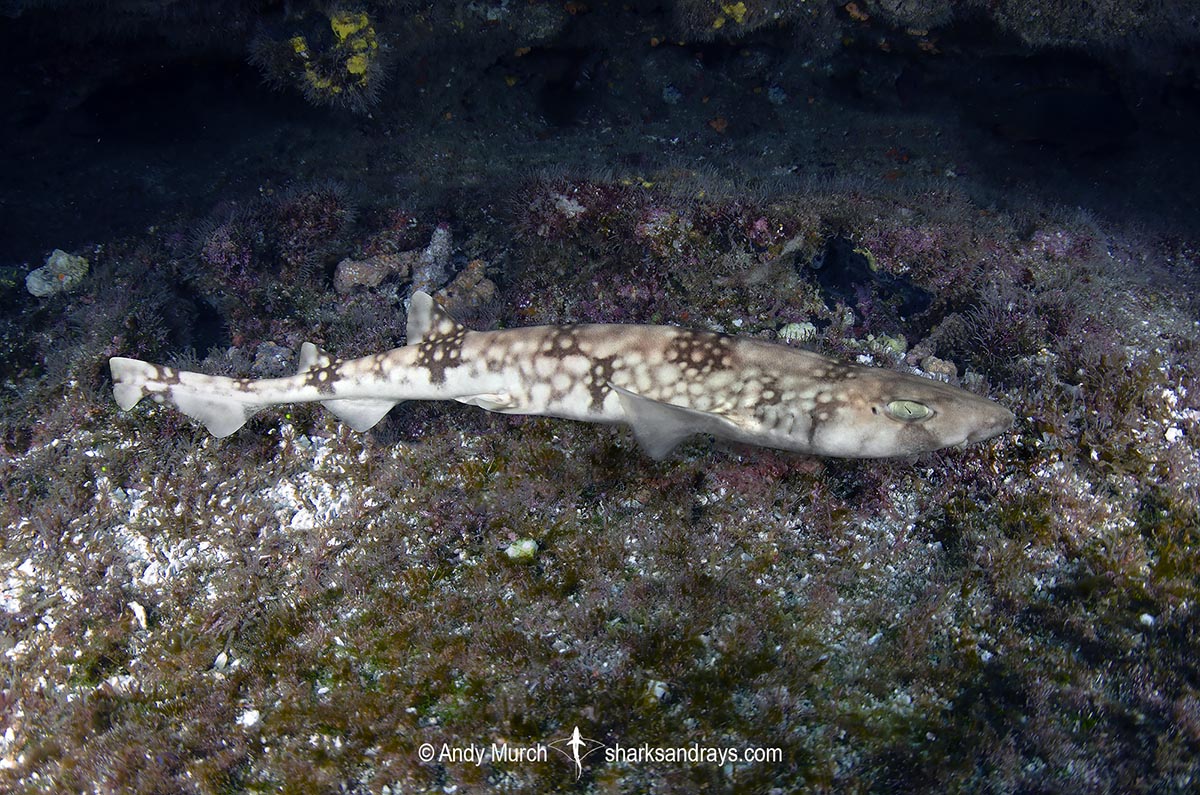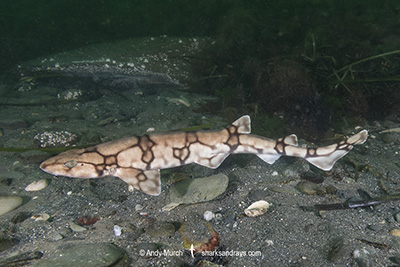Common names
Whitesaddled Catshark, Western Catshark.
Binomial
Scyliorhinus hesperius.
Synonyms
None.
Identification
Slender body. Snout narrowly rounded. Mouth width greater than snout length. First dorsal origin posterior to pelvic fin insertion. Second dorsal fin anterior to anal fin insertion. First dorsal fin larger than second. Dorsal surface somewhat changeable but generally light grey/brown with 7-9 squarish, dark brown saddles. Saddles are filled with circular gaps that look like white spots but are actually just the background pigmentation. The light ‘spots’ may fuse to form irregular patterns. Cream coloured on flanks and ventrally.
Size
Maximum length at least 47cm. Size at birth unknown. Jose Castro suggests a max size of 50-52cm based on its similarity to the chain catshark.

Conservation Status
LEAST CONCERN
The whitesaddled catshark occurs deeper than the operational depth of fisheries within its range, so it likely that this species is not impacted.
Habitat
Tropical continental slope from 274-457m. Lack of larger specimens in trawls implies that adults inhabit steep or rough terrain not suitable for trawl fishing.
Distribution
The whitesaddled catshark is confined to the Western Atlantic. Mostly on the Caribbean coast of Central America from Honduras to Colombia. However, I encountered three whitesaddled catsharks in Guatemala while accompanying gill netters in Quetzalito near Puerto Barrios. All were fished up in one gill net from approximately 200m. 1985 two specimens were captured in South Carolina during an experimental crab fishing survey suggesting that the range of Scyliorhinus hesperius may be much more widespread than initially thought.
Reproduction
Oviparous.
Diet
Unknown. Probably consumes small benthic invertebrates.
Behavior
Poorly known.
Reaction to divers
Not encountered by divers due to its depth range.
Diving logistics
Although it is too deep to encounter on scuba, it may be possible to see a whitesaddled catshark from the deepwater tourist submarine that is based on Curacao. During deep water surveys, the sub has been able to find (and retrieve) this species in the past.

